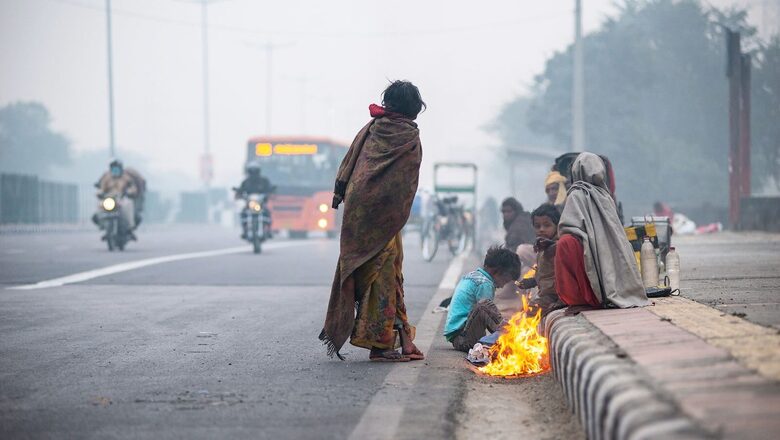Tired of the Sun Playing Peek-a-Boo This Jan? Here's Why Delhi's Bone-Chilling Winter Refuses to End

views
Every year, Delhi brings out its woolens and quilts in December-January to brave the chill as temperatures drop across north India. However, even for those used to nip in the air, the first month of 2022 proved to be an aberration.
While experts had warned of a numbing winter, courtesy the La Nina weather phenomenon, a dust storm from neighbouring Pakistan, caused by a Western Disturbance — a storm system that forms in the Middle East and brings sporadic winter rain and snow to northern India in the first 10 days of January — is to be blamed.
Delhi recorded this winter’s coldest day on Tuesday, with the maximum temperature of 12.1°C. This was also the coldest day for January since 2013, when the maximum temperature fell to 9.8-degree Celsius on January 3, 2013, at the Safdarjung weather observatory. Even Mumbai has witnessed its coldest January in a decade. The chill is expected to last for a few more days before temperatures rise again.
According to weather experts, the city has recorded 11 days with lower daytime temperatures (the maximum staying below 17 degrees Celsius). This is the highest since January 2015, which also saw 11 such days, the Times of India reported. It is expected that this winter could breach the record of January 2003, which had seen 18 such days.
According to IMD, a “cold day” is when the minimum temperature is below 10 degrees Celsius and the maximum is at least 4.5 degrees Celsius below normal.
Apart from this, Delhi has also recorded the highest rainfall for January in the past 122 years and very low sunlight or clear sky, making this winter “unique”.
What’s a Western Disturbance?
A western disturbance (WD) is high moisture air flowing from the Mediterranean Sea towards Eastern Himalayas via Iraq and Pakistan. This leads to snowfall in the hills and rains in the northern regions, including Delhi.
In January 2022, north India was impacted by six Western Disturbances till the 24th of the month, out of which three turned out to be active and intense in nature. Two Western Disturbances in quick succession between 3 and 9 January brought above-average rain in most parts of northwest India. After a gap of about 10 days, fresh active Western Disturbance affected northwest India during 21-24 January leading to record-breaking precipitation across north India making it the wettest January ever for many stations.
As per the data from Indian Meteorological Department (IMD), till 24 January northwest India recorded a total of 76.0 mm rainfall against the normal of 23.1 mm; this is 229 more than the normal rainfall.
Pollution to blame for sun playing peek-a-boo?
Delhi and large parts of India’s northern plains have become synonymous with smoggy mornings in winter, courtesy air pollution. However, compared to the past few years, the air this January has been better, with an average Air Quality Index (AQI) of 267.8, the lowest since at least 2018 for the period up to January 16. The earlier lowest value of AQI for this period was 309.8 in January 2020. It suggests that lack of visibility and sunlight is more because of fog than smog.
When will we get respite from chill?
IMD scientist RK Jenamani said the maximum temperature is expected to rise gradually, with an active western disturbance likely to raise the temperature further from January 28.
Mainly dry weather is expected across northwest India till January 30. Between January 27 and 30, a cold wave is expected to sweep the hills and plains of north India as very cold northwest winds from snow-clad mountains are expected to enter plains.
The minimum temperature may fall below 5.0°C in Delhi and Uttar Pradesh; below 3.0°C is Haryana and Punjab; and 0°C or even below in some parts of Rajasthan. There are chances of sunshine from Thursday/Friday onwards but the cold may persist.
Read all the Latest India News here




















Comments
0 comment